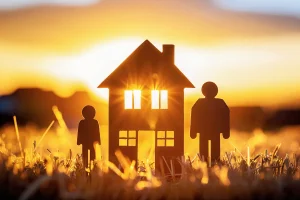Welcome to the zip code health lottery, where your address can be a stronger predictor of your health than your DNA. In this digital age, where we can video chat with doctors halfway across the globe, it’s almost laughable (if it weren’t so tragic) that a few digits in your mailing address can dictate your health destiny.
- The Zip Code Health Divide: More Than Just Numbers
- Historical Roots of Health Inequity
- Social Determinants: The Hidden Health Influencers
- Tech to the Rescue? Digital Solutions for Analog Problems
- Policy Prescriptions: Rewriting the Zip Code Health Narrative
- Community Action: Grassroots Solutions for Local Health
Here’s the critical revelation – this isn’t just about individual health. It’s a symptom of a broader societal ailment, one that’s costing us billions in healthcare and lost productivity. It’s time we stop treating the symptoms and start curing the disease of zip code health inequality.
In this post, we’re going to rip off the band-aid and expose the ugly truth about how where you live determines how long you live. Buckle up – it’s going to be a bumpy ride through the neighborhoods of health inequity.
Overview:
- Zip code health disparities can lead to a 30-year difference in life expectancy within the same city.
- Social determinants of health, including access to healthcare, food quality, and environmental conditions, play a crucial role in shaping health outcomes.
- Historical context, including policies like the Social Security Act and Medicare, have shaped the landscape of senior health care.
- Innovative solutions, from AI-driven health equity platforms to community health hubs, are emerging to address these disparities.
- Policy changes and community engagement are crucial in tackling zip code-based health inequalities.
The Zip Code Health Divide: More Than Just Numbers

Let’s cut to the chase – your zip code isn’t just a convenient way for Amazon to find you. It’s a powerful predictor of how long and how well you’ll live, especially in your golden years.
In Chicago, residents of the Loop are living it up with an average life expectancy of 83 years. Meanwhile, just a few miles away in Washington Park, folks are clocking out at 69. That’s a 14-year difference for the price of a short cab ride. In Dallas, the gap stretches to a whopping 18 years between neighborhoods just six miles apart.
This isn’t just a game of numbers – it’s a matter of life and death. These disparities highlight systemic inequities that are literally killing people. And let’s be clear, this isn’t about individual choices or bad luck. It’s about a system that’s rigged from the start.
But why should you care if you’re on the right side of the zip code divide? Because this inequality is a drain on our entire society. It’s increasing healthcare costs, reducing productivity, and placing a greater burden on social services. In other words, even if you’re not directly affected, your wallet certainly is.
So, the next time you’re feeling smug about your trendy neighborhood, remember – your zip code might be slowly killing your less fortunate neighbors.
Historical Roots of Health Inequity
Alright, history buffs, let’s take a trip down memory lane to understand how we ended up in this zip code health mess.
Back in the early 20th century, public health was all about fighting infectious diseases and improving sanitation. Fast forward to the mid-1900s, and we start seeing some game-changers. The Social Security Act of 1935 threw a lifeline to older adults, and Medicare and Medicaid in 1965 opened up healthcare access like never before.
But here’s the rub – these well-intentioned policies didn’t solve everything. In fact, they may have inadvertently contributed to the disparities we see today by creating a system where some areas benefited more than others.
Place-based health initiatives are crucial in addressing the systemic factors that contribute to health disparities
says Dr. Thomas LaVeist, a pioneer in the field of health equity.
LaVeist and others have shown us that where you live matters more than we ever realized. They’ve pushed us to look beyond individual factors and consider the broader environmental and social context of health.
Yet, despite all this progress in understanding, health disparities based on zip code persist. It’s like we’ve diagnosed the disease but can’t quite seem to find the cure. Or perhaps more accurately, we know the cure but lack the collective will to administer it.
So, while we pat ourselves on the back for our historical progress, let’s not forget – the job is far from finished.

Social Determinants: The Hidden Health Influencers
Let’s pull back the curtain on the real puppet masters of your health – the social determinants of health (SDOH). These aren’t some mystical forces, but very real, very tangible aspects of your environment that shape your health outcomes.
We’re talking about access to healthcare, sure, but also the quality of food in your neighborhood, the pollution levels in your air, the safety of your streets, and even the stress levels induced by your daily commute. These factors are the silent assassins of health equity, operating in the shadows of our zip codes.
Consider food deserts – areas where access to affordable, nutritious food is limited. In some neighborhoods, the closest thing to a vegetable is the wilted lettuce on a fast-food burger. Is it any wonder that rates of obesity and diabetes skyrocket in these areas?
Or think about environmental conditions. Some neighborhoods are blessed with parks and clean air, while others are cursed with pollution and toxic waste sites. Your lungs don’t care about your zip code, but your zip code sure cares about your lungs.
Even economic stability plays a role. Chronic stress from financial insecurity can be as damaging to your health as a poor diet or lack of exercise. And let’s not forget about education and health literacy – try managing a chronic condition when you can’t understand your medication instructions.
The bottom line? Your zip code is more than an address – it’s a complex web of factors that can either support or sabotage your health.
Tech to the Rescue? Digital Solutions for Analog Problems
In this age of smartphones and smart homes, can technology outsmart our zip code health crisis? Let’s plug into the possibilities.
Telehealth services are bringing medical expertise to areas where doctors are as rare as unicorns. With a decent internet connection, grandma can now video chat with a specialist without leaving her living room. But let’s not get too excited – a virtual doctor can’t prescribe fresh produce to a food desert or clean up a toxic waste site.
AI-driven health equity platforms are emerging as the new sheriffs in town. These high-tech tools can analyze mountains of data on social determinants of health, helping to predict health outcomes and tailor interventions. It’s like having a crystal ball for community health – if that crystal ball ran on algorithms and big data.
Wearable devices are turning our bodies into data factories, tracking everything from heart rates to sleep patterns. This personal health data could be a game-changer in understanding and addressing health disparities. But remember, a Fitbit won’t fix systemic inequality.
Digital health technologies hold immense promise, but we must ensure they don’t exacerbate existing disparities
warns Dr. Emily Johnson, a health tech expert
The tech world’s mantra of “move fast and break things” doesn’t quite work when what’s broken is people’s health. We need to move thoughtfully and fix things.
So, while we shouldn’t pin all our hopes on silicon chips and smart algorithms, they might just be the boost we need to leap over the zip code health divide.

Policy Prescriptions: Rewriting the Zip Code Health Narrative
It’s time to face the music – we can’t tech our way out of this mess alone. We need policy changes that hit the root causes of zip code health disparities. Let’s write a new prescription for health equity.
First up, we need to rethink how we fund and deliver healthcare. The current system often reinforces existing disparities. What if we allocated health resources based on community need rather than ability to pay? Revolutionary, I know.
Next, let’s talk about housing. Stable, affordable housing is healthcare. Period. Policies that promote mixed-income neighborhoods and prevent displacement could do more for health than a truckload of vitamins.
Education is another key player. Health literacy should be as fundamental as reading and writing. Let’s integrate health education into school curricula from day one.
Environmental policies are crucial too. Clean air and water shouldn’t be luxuries reserved for fancy zip codes. We need stricter regulations and enforcement to ensure all communities have a healthy environment.
Effective policies must address the interconnected nature of social determinants of health
argues Dr. Sarah Lee, a healthcare policy analyst
But here’s the real challenge – these policies need to be implemented at all levels, from local to federal. It’s not enough to have great ideas; we need the political will to turn them into reality.
Remember, policy change isn’t just for politicians. It starts with us – in our votes, our voices, and our demands for a healthier, more equitable society.
Community Action: Grassroots Solutions for Local Health
While we wait for the policy wheels to turn (slowly, oh so slowly), communities are rolling up their sleeves and taking health into their own hands. It’s time to spotlight these grassroots heroes.
Take Pittsburgh’s Hill District, for example. Faced with limited access to healthy food and healthcare, they didn’t just sit around complaining. They partnered with CVS Health and the Ebenezer Baptist Church to provide job training, hot meals, and healthcare services. The result? Significantly improved health outcomes. Now that’s what I call community spirit with a side of better health.
Or look at Maricopa County, Arizona. They turned buses into mobile farmers’ markets, bringing fresh produce to food deserts. It’s like Uber Eats, but with more green and less guilt.
Community health workers are emerging as the unsung heroes in this fight. They’re the boots on the ground, providing culturally competent care and bridging the gap between communities and the healthcare system.
Community-led initiatives are often the most effective in addressing local health challenges
notes Dr. Lisa White, a senior living consultant
But let’s be real – these community efforts, while admirable, shouldn’t let policymakers and health systems off the hook. They’re band-aids on a broken system. The goal should be to create a society where such heroic efforts aren’t necessary.
So, while we celebrate these community champions, let’s also use their success stories to demand systemic change. After all, health equity shouldn’t depend on the kindness of neighbors – it should be a given.

Call to Action
The zip code health lottery is rigged, but we’re not powerless. It’s time to stop accepting health disparities as inevitable and start demanding change. Here’s what you can do:
- Educate yourself about health disparities in your area. Knowledge is power.
- Support local community health initiatives. Volunteer, donate, or spread the word.
- Advocate for policies that address social determinants of health. Make your voice heard.
- Vote for candidates who prioritize health equity. Your ballot is a powerful tool.
- Challenge your own biases about health and wealth. Empathy is the first step to change.
The zip code health lottery isn’t just a game of chance – it’s a mirror reflecting the deep-seated inequalities in our society. Every premature death, every preventable illness is a indictment of our collective failure to ensure health equity.
But we stand at a crossroads. We can continue down the path of complacency, or we can chart a new course towards a future where health isn’t determined by postal codes. The choice is ours, and the time for action is now.
Your voice, your vote, your involvement can tip the scales. Whether it’s supporting local health initiatives, advocating for policy changes, or simply spreading awareness, every action ripples outward, creating waves of change.
Remember, in the grand tapestry of public health, we’re all interconnected threads. By lifting the health of our most vulnerable communities, we elevate the well-being of our entire society. The zip code shouldn’t be a life sentence – let’s rewrite this story together.
















